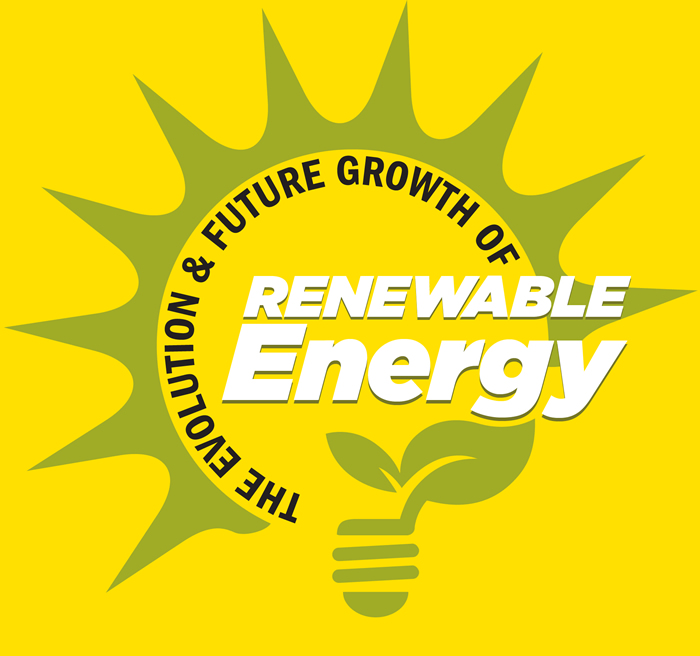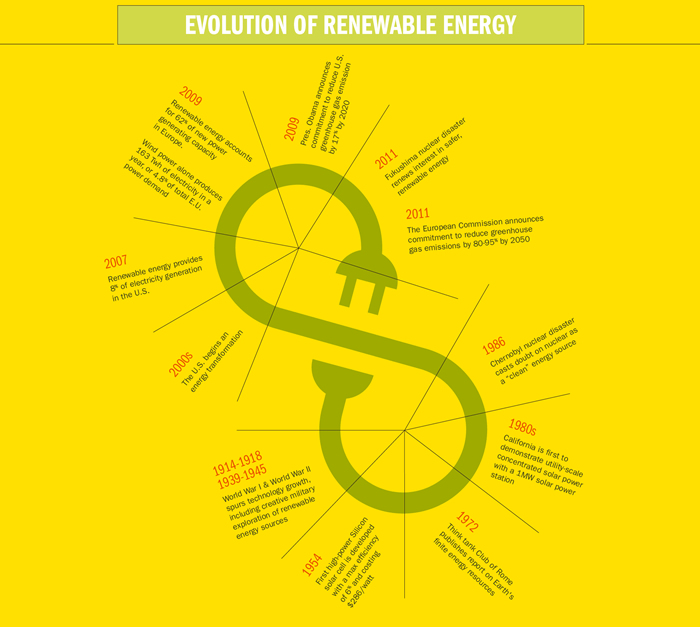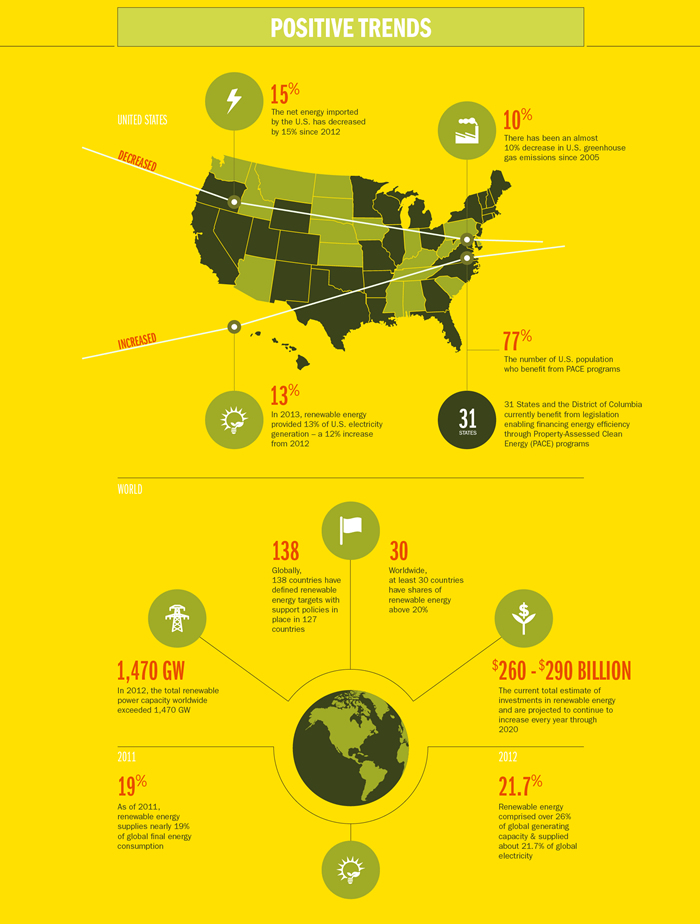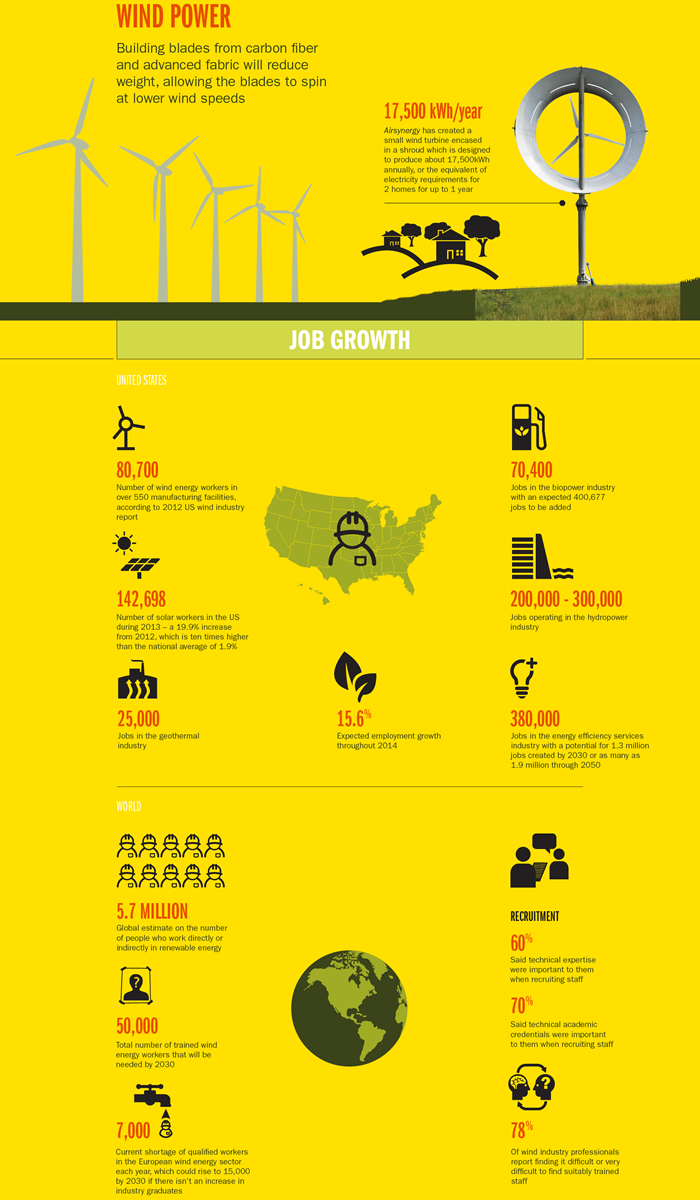To learn more about the future of renewable energy, checkout the infographic below created by the New Jersey Institute of Technology
Evolution and Future Growth of Renewable Energy
Contributed by | New Jersey Institute of Technology
In 2014, major debates and discussions surrounding climate change and green living in the United States has placed an unprecedented focus on renewable energy. The future growth in the renewable energy sector is slated to be significant as American’s make an effort to minimize their energy footprint on Earth.
While the support and evolution of renewable energy technologies is growing rapidly in 2014, supporters of renewable energy have been considering and exploring such technologies for close to a century.
For instance, the technological growth during the World Wars lead to the military exploring different renewable energy sources. In the 1950′s, solar power began to be developed, with the first high power solar cell made of silicon developed in 1954. It provided 6% efficiency, with a cost of $286/watt.
The early 1970′s marked further interest, as the Club of Rome think tank published a report stating that Earth has finite resources.
During the 1980′s, a 1 megawatt solar power station was built in California. This was the first facility designed on a utility scale. Nuclear power had been considered a serious possibility for clean energy, though the 1986 Chernobyl nuclear incident cast doubt on this as a viable energy source.
Throughout the early 2000′s, talk and use of renewable energies has increased significantly, with an 8% use in 2007 in the US. Europe also saw an increase, with a 62% new power generating capacity in 2009.
There are several indications of positive future trends when it comes to clean, renewable sources of energy. These include the following:
*Importing of net energy in the US has decreased since 2012, by 15%, while there has been a 13% increase in renewable energy production within the US since 2012.
*There are 80,700 workers in the field of wind power, as of 2012, 25,000 jobs in the geothermal field, and 70,400 jobs in the field of biopower. Also, other careers have seen an upward trend in recent years.
*This is a global trend, with 5.7 million workers who work in the field of renewable energy. There is currently a shortage of workers in these fields, so an increase in technical training is necessary.
*2030 is the year that is being focused on for projected growth of trained professionals in these areas, and increased use of these energy sources.
To learn more about the future of renewable energy, checkout the infographic below created by the New Jersey Institute of Technology




.jpg)


The content & opinions in this article are the author’s and do not necessarily represent the views of AltEnergyMag
Comments (0)
This post does not have any comments. Be the first to leave a comment below.
Featured Product

